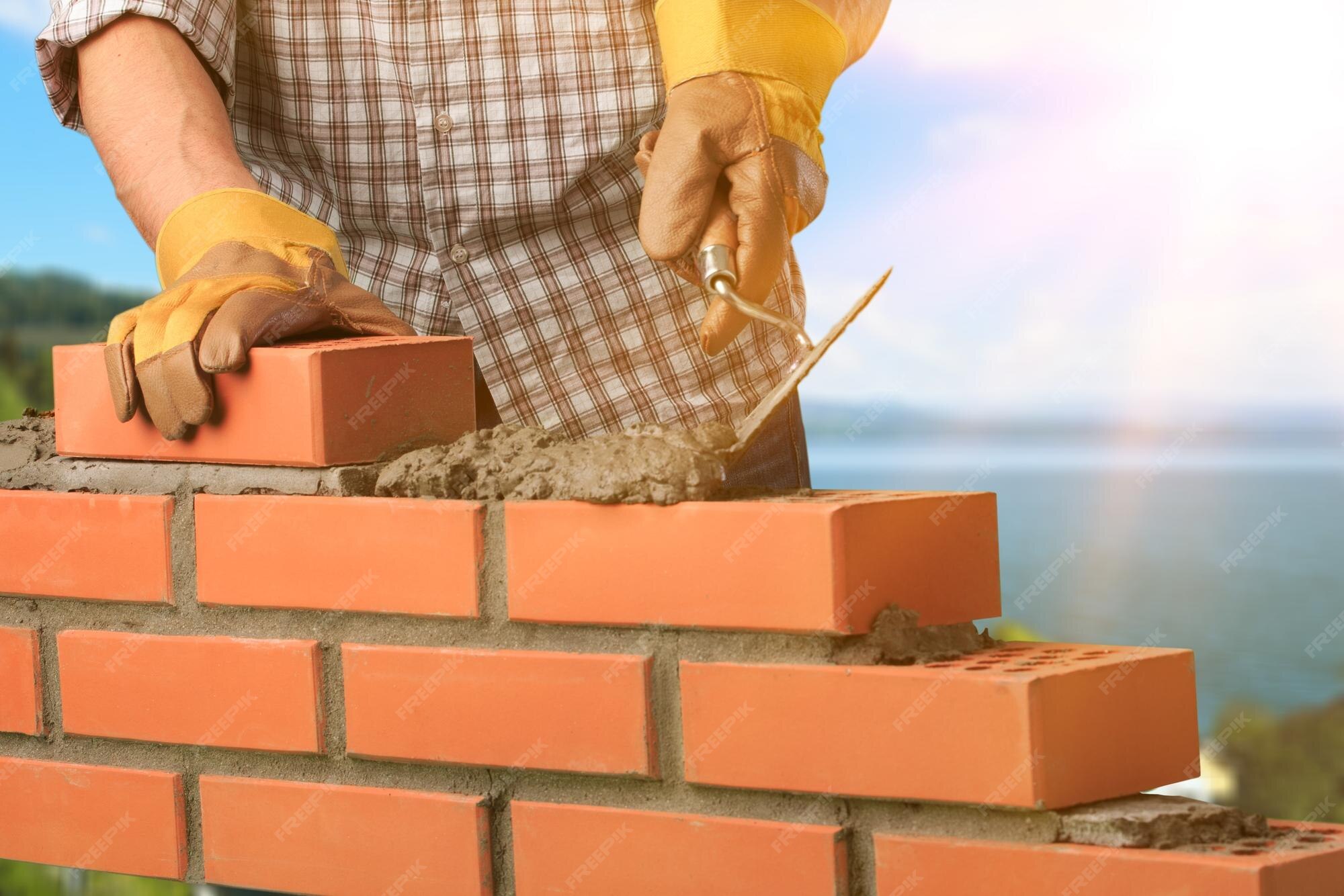The Best Guide To Bricklayer Auckland
Wiki Article
Some Known Details About Bricklayer Auckland
Table of Contents7 Easy Facts About Bricklayer Auckland DescribedBricklayer Auckland Fundamentals ExplainedThe 30-Second Trick For Bricklayer AucklandBricklayer Auckland Can Be Fun For EveryoneBricklayer Auckland Fundamentals ExplainedThe Single Strategy To Use For Bricklayer Auckland
Blocks ought to constantly be stacked on slabs; never load them straight on unequal or soft ground. Do not store bricks on scaffolds or paths.Except where stacked in sheds, block stacks should never be even more than 7 feet high. When a pile of block gets to a height of 4 feet, it has to be tapered back 1 inch in every foot of height over the 4-foot level. The tops of brick heaps need to be maintained level, and the taper must be maintained throughout unpiling procedures.
Architectural bond refers to exactly how the individual masonry systems interlock or tie with each other right into a single architectural unit. Making use of grout to adhere surrounding wythes of masonry.
Bricklayer Auckland Things To Know Before You Get This
Pattern bond refers to the pattern formed by the stonework systems as well as mortar joints on the face of a wall (Bricklayer Auckland). The pattern might arise from the structural bond, or it may be simply attractive as well as unconnected to the architectural bond. Figure 4-4 reveals the six standard pattern bonds in typical usage today.The running bond is the most basic of the six patterns, consisting of all stretchers. Because the bond has no headers, steel connections typically create the architectural bond. The running bond is made use of mainly in tooth cavity wall surface building and construction, block veneer walls, as well as encountering floor tile walls made with extra vast cot ceramic tile.
Good bricks must not degenerate when put in water. Only when fat lime or clay mortar is used or when one is forced to utilize bricks that are not well burned, this soaking regulation has to be loosened up.
More About Bricklayer Auckland
In all situations, bricks must not be dealt with in baskets or in any other setting which will destroy the intensity of their edges. A layer of mortar is spread to cover the complete width of the wall surface for a suitable size of the lower program.
We press the side bulging mortar in strongly to be level with the face of the wall if it is to be left unplastered. In the usual practice embraced by several masons, a row of blocks is very first positioned on a slim layer of bed mortar leaving the cross joints vacant.


Strictly this is not a great practice. (However, when utilizing concrete mortar of high strength, the loss of toughness as a result of violation of these regulations might be just minimal.)The walls are raised genuinely More hints plumb. All programs are laid really horizontal as well as all upright joints absolutely upright. Upright joints in alternate courses ought to come directly, one over the various other.
Get This Report about Bricklayer Auckland
For this objective, a wood straight side with graduation giving a thickness of each block training course including joint can be utilized for assistance. For a thick wall surface, the above operation is repeated along with both faces of the wall surface and the indoor filling blocks for the thick wall surface are stocked a similar way.
This procedure of loading open joints is described flushing-up. It is mistakenly left out for numerous courses on some badly-executed jobs and also only done after that (not after every program) in an inefficient way. It is not an excellent method as well as should be prevented as it is essential that every course must be purged up to the level if excellent my website work is called for.

Not known Factual Statements About Bricklayer Auckland
The mortar climbing as well as loading the upright check this site out joints completely as well as develops an extremely strong and solid wall. This is referred to as larrying. For a rat trap bond work (as in the building of cavity walls), if the mortar is placed carelessly on the brick, some of it will fall under the cavities and will certainly be lost.The face of the brickwork shall also be cleansed of all mortar droppings, etc(ii) When situations make it necessary to continue a portion of a building in irregular programs, the work shall be constructed back (according to the bond utilized on the job) at an angle not steeper than 45 levels so as to make certain an uniform and also efficient bonding.
Or else, for faces to be glued, ending up of the face joints need to be brought out as reviewed in listed below (This is extremely important.)(iv) The wall surfaces need to be evenly raised around not leaving any kind of component one metre (3 feet) lower than the other - Bricklayer Auckland. A day's work must not be greater than 1.
The Of Bricklayer Auckland
When the facework is to be later plastered or the joints alone are to be sharp, the joints should be raked while the wall is being built. Bricklayer Auckland. It ought to be raked to a minimum deepness of 12 mm by a raking device throughout the progression of the work itself, when the mortar is still green.
If smudging or aiming is not envisaged, the joints need to be struck flush and finished at the time of laying itself, as currently specified. Half-brick wall surfaces often tend to fracture unless care is taken in its building. Brickwork in half-brick stonework is to be executed with stretchers in 1: 5 mortar.
Report this wiki page